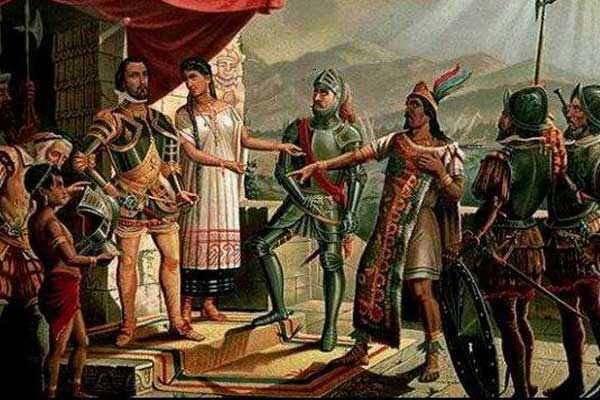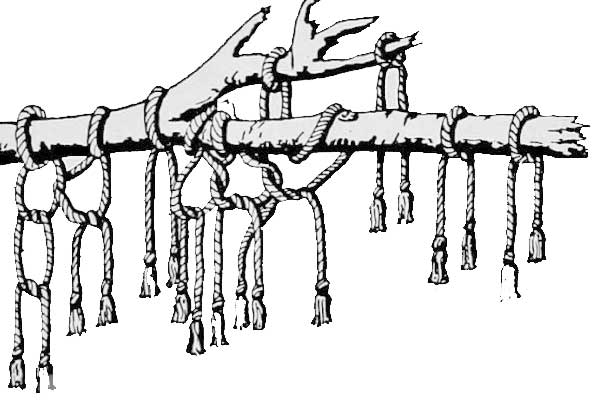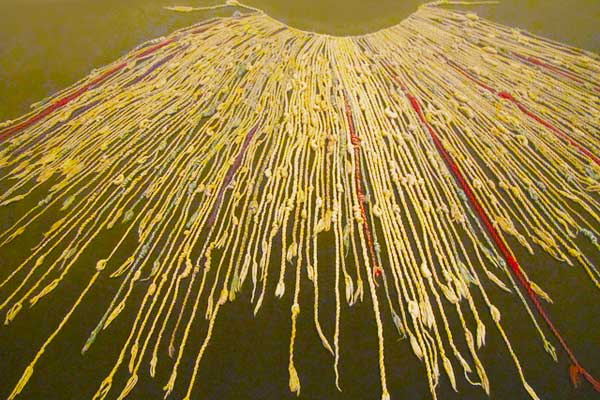A remarkable discovery was made in 2017, regarding the ever-mysterious Inca quipu (pronounced: key-poo). The quipu or khipu is an intricate system of colourful strings and knots, with each colour and knot telling a different story.
These knots were originally thought to only contain numerical information and have baffled archaeologists for hundreds of years.
It was believed that the Incas, although technologically and architecturally-advanced, had no written language – but that is only true if you consider language to be heard (spoken) and seen (written).
However, what if language could also be felt, much like a blind person would read brail?
In this article, I will try to shed light on the baffling and beautiful art of Inca Knots which speak volumes even to this day.

Get a Machu Picchu trek quote
Start planning your Machu Picchu hiking holiday.
Inca Knots - Unlocking the Mysterious Art Of Quipu
First Proof of Written Storytelling Using Inca Knots
In a discovery made by archaeologist Sabine Hyland, we have come that much closer to learning the true nature of these elusive quipu. Hyland discovered a pair of quipu knots in an Andean village, which had been kept secret and preserved by the village elders for generations.
These quipus are larger than the previous ones discovered, and the village elders informed Hyland that these intricate Inca knots told a “story of warfare” and “were created by local chiefs”. This is the first confirmation by descendants of the Incas that the knots do in fact tell a story.
In the wooden box which had kept the quipu safe for centuries, dozens of letters from the 17th and 18th centuries were also discovered. These letters were official documents and correspondence between the Spanish and village leaders.
Another startling discovery was that Spanish chroniclers noted that Inca runners carried quipu letters. It was thought that the Incas used quipu letters during rebellions in order to safeguard their correspondence against the Spanish conquistadors.
The only concern with the discovery of the Collata quipu is that they are dated around the mid-18th century - which is 200 years after the Spanish first colonised Peru in 1532. The question is now this: are the narratives due to the influence of alphabetic writing or do they stem from the original Inca narratives?

Meetings between the Spanish and the Recuay
Are the Inca Quipu an Ancient Encyclopaedia?
The discoveries made by Manny Medrano, an undergraduate student at Harvard University during his freshman year at college, go a long way to prove that the inca knots known as quipu were much more than just a numerical system. Medrano stated that the quipu is essentially “ancient Excel spreadsheets”, which we now refer to as an ancient encyclopaedia.
Medrano was able to match the six quipu he was studying to a census recorded by the Spanish in 1670, which recorded 132 Recuay people living in the area at the time. Much like Hyland, Medrano hypothesised that each colour and knot held meaning. He further asserted that the direction of each knot (i.e. left-stitch or right-stitch) held its own meaning as well.

Quipu image taken from Internet Archive
The Clue of the Inca Knots is in the Recuay Culture
With this theory in mind, Manny Medrano continued studying the quipu and discovered that the colors corresponded with the first names of the Recuay people recorded in the Spanish census. He also realised that the knots told a story of the village and the villagers.
From there, Medrano surmised that there were six clans in the village, and the knots helped distinguish the social status of each clan, as well as the individual status of each villager in each clan.

Quipu image (otherwise known as Inca Knots) taken by Lynn Dombrowski.
History Is Written by the Losers
The Inca Knots was truly a fundamental discovery in the Inca history. We know that history is very often (almost always) written by the victors. However, this discovery, as well as the discovery made by Sabine Hyland, will give the ancient Incas and their advanced civilisation an opportunity to tell their story.
It is now believed that the quipu was not only used to store numerical data, but also narratives, such as letters, stories and myths. It is an opportunity for the history of the conquerors to be overwritten by the history of the conquered.
What is truly remarkable is that this monumental discovery was made by a college undergrad on his spring break, whereas archaeologists and anthropologists have been trying to decipher meaning behind these intricate Inca knots for over 200 years.
Perhaps it was just a case of having the right skills, and a fresh mindset. Medrano was majoring in economics at the time of his discovery, and the puzzle of the quipu seemed to only fuel his need to discover its secrets. He hopes to help uncover the mysteries of their intricate language, with the goal of giving voice to the true events of the past.

Get a Machu Picchu trek quote
Start planning your Machu Picchu hiking holiday.
Conclusion
I hope you enjoyed my Inca Knots article! You can learn more about Incan culture and history in our guides on Machu Picchu and the various Machu Picchu treks to the ancient citadel, including the Inca Trail.
If you have any questions or insights about Inca Knots, feel free to leave a comment below. We will do our best to get back to you as soon as possible, so make sure you check this page again after posting.

I read of the quipu recently in a chapter by John Timbs. He wrote a rather detailed explanation of the "code", the Inca kept a sort of census record, the knots were their system. I am a bit unnerved, the code was broken a very long time ago by the explorer Markham. Timb's writes "The well-known contrivance of the Quipus, or method of counting and even recording events by means of cords, was equally ingenious and original. The quipus of the Peruvians were of twisted wool, and consisted of a thick cord, with threads more or less fine, attached to the main part. The smaller lines were covered with knots, either single or double. The size of the quipus varies much, sometimes the main cord being five or six yards long, and at others not more than a foot; the branches rarely exceeding a yard in length, and being sometimes shorter. In the neighbourhood of Lurin, on the coast of Peru, a quipu was found which weighed twelve pounds. The different colours of the threads had different meanings: thus, the red signified a soldier, or war; the yellow gold; the white, silver, or peace, &c. In the system of arithmetic, a single knot signified 10, two single knots 20, a double knot 100, a triple knot 1000, and so on to higher numbers. But not only the colour and mode of combining the knots, but also the laying-up of the strands of the cord, and the distances of the threads apart, were of great importance in reading the quipus. It is probable that in the earliest times this ingenious contrivance was merely used for enumeration, as the shepherd notches the number of his sheep on a stick; but in the course of time the science was so much improved that the initiated were able to knot historical records, laws, and decrees, so that the great events of the empire were transmitted to posterity; and, to some extent, the quipus supplied the place of chronicles and national archives. The registry of tributes, the census of populations, the lists of arms, of soldiers, and of stores, the supplies of maize, clothes, shoes, &c., in the storehouses, were all specified with admirable exactness by the quipus; and in every[149] town of any importance, there was an officer, called the quipu camayoc, to knot and decipher these documents." Timb's notes it is from —"Markham’s Visit to Peru." (which see). It is highly possible that someone today believed they did indeed "discover" the code of the knots, but a student..? any researcher worth their salt would bother to spend some wee morning hours scouring research papers and the old stand-by the public domain- of which that chapter quoted sits- in Gutenberg. Markham's travels which describe the quipu are more detailed. Go to archive dot org, search All Texts, and for a great starting point use "Markham" and "Inca" for search terms. I find it suspect that a student would not have seen these papers.